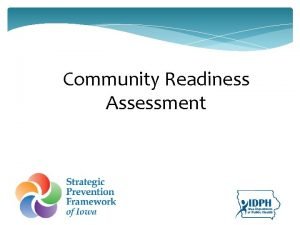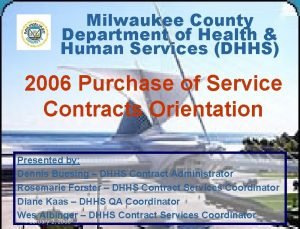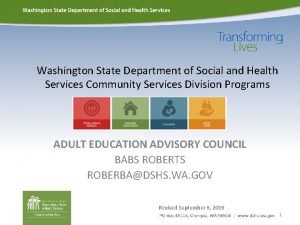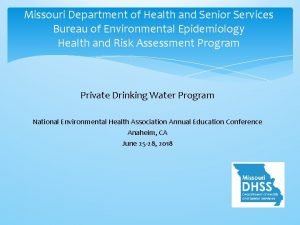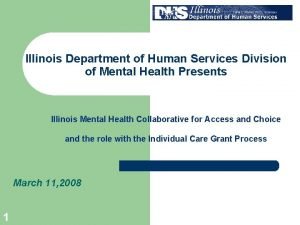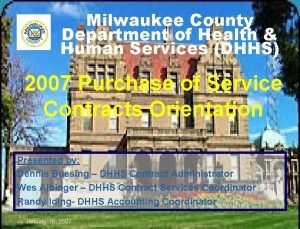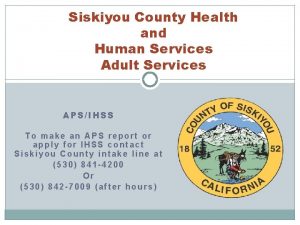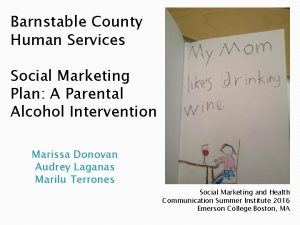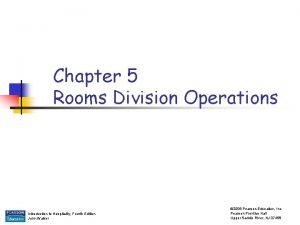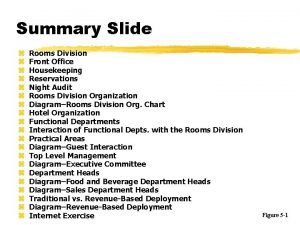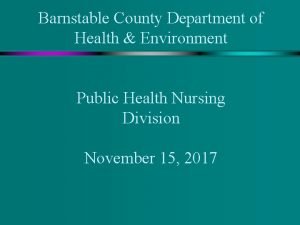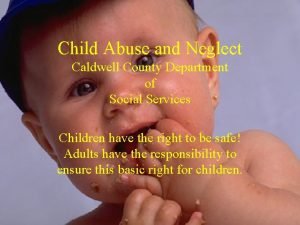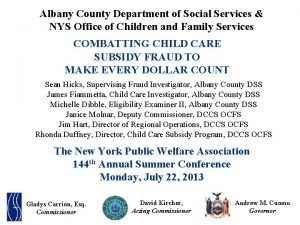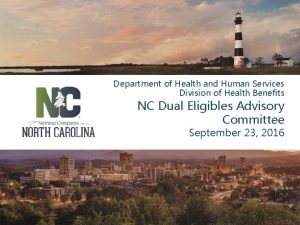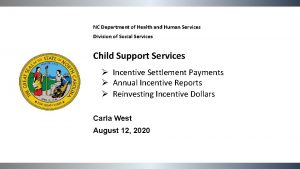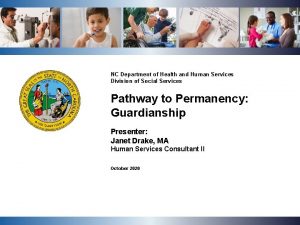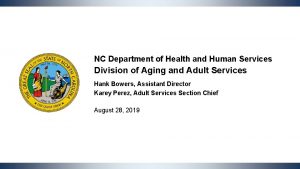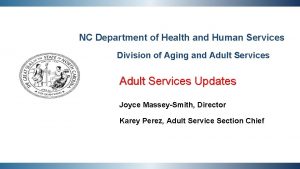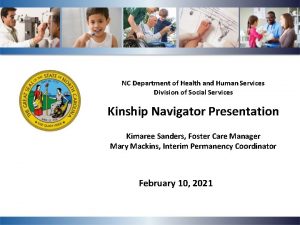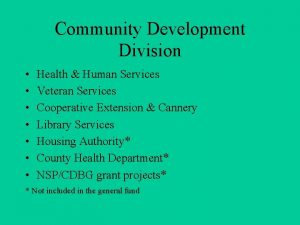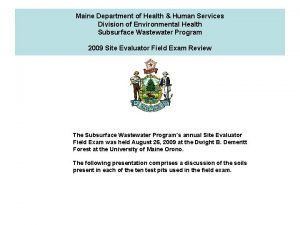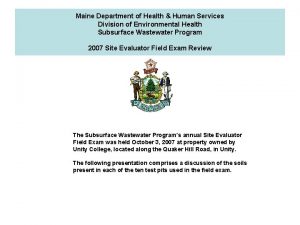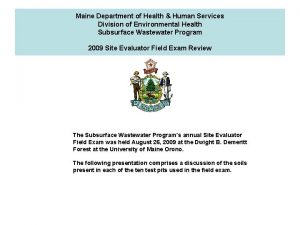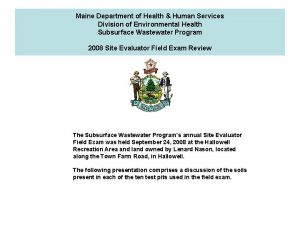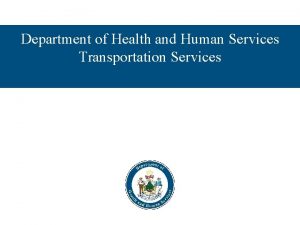NC DEPARTMENT OF HEALTH AND HUMAN SERVICES Division



































- Slides: 35

NC DEPARTMENT OF HEALTH AND HUMAN SERVICES Division of Public Health Hazards Control Unit Asbestos Hazard Management Program (AHMP) Lead-Based Paint Hazard Management Program for Renovation, Repair & Painting (LHMP-RRP) http: //epi. publichealth. nc. gov/asbestos/ahmp. html (919) 707 -5950


Asbestos has been used in over 3, 000 building products primarily because of the following properties: Fireproofing Strengthening Insulating: Thermal Insulating: Acoustical Condensate Control Decorative

Asbestos – Health Effects Asbestos is an inhalation hazard. No known safe level of exposure. Exposure is potentially fatal.

Primary Route Of Exposure is “INHALATION”

Asbestos – Health Effects (contd. ) Three fatal diseases associated with asbestos exposure: Asbestosis 15 -30 year latency period Direct dose-response relationship Lung Cancer Approximate 30 year latency period Smokers with exposure to asbestos have 80 X greater risk Mesothelioma Approximate 30 -40 year latency period No dose-response relationship

Asbestos Related Regulations Federal: l EPA – National Emissions Standards for Hazardous Air Pollutants (NESHAP) – Asbestos in Schools Rule (AHERA) – ASHARA l OSHA – – General Industry Standard Construction Standard Respiratory Protection Standard Hazard Communication Standard

Asbestos Related Regulations North Carolina: Dusty Trades Law - DHHS Disposal - DEQ, Division of Solid Waste Transportation – DOT NC DOL OSH Asbestos Hazard Management Program – DHHS

EPA AHERA Regulation l Asbestos-Containing Materials in Schools Regulation (AHERA) – effective since 1987 l Applies to public and not-for-profit, non-public schools

AHERA Scope and Purpose l Identify friable and nonfriable asbestos containing building materials l Visual inspection and sampling l Submit management plans

AHERA Asbestos Inspections l All interior, accessible, suspect ACBMs must be addressed during inspection (some exterior) l Must be conducted in all school buildings

School Building Includes: l l l Classrooms, libraries, laboratories, food areas Gyms and recreational facilities Dorms and administrative facilities

School Building Includes: l Maintenance, storage and utility facilities l Portico and covered exterior walkways l Exterior portions of mechanical systems (HVAC)

Asbestos Management Plans ● AHERA requirements to identify, locate, classify, quantify and assess acbms is all documented in the MP ● Submit Management Plans and Reinspection Reports to NC AHMP for review and approval

Exclusion from Asbestos Inspection School buildings built after October 12, 1988 Architect, building engineer, or general contractor responsible for the construction of the school buildings provides a letter stating “No ACBMs were specified for use in the construction of the building(s)”. The letter exempts the school building from the required AHERA asbestos inspection, but not a Management Plan. NOTE: Asbestos is still added to some building materials, so sampling is still required prior to renovation/demo.

Management Plans are to be in place before the school opens

On-Going Requirements if Your Building Has Identified ACBMs Trained LEA Designee 2 -hour asbestos awareness training for custodial staff Annual notification Periodic Surveillance every six months Reinspections every three years Maintain all records related to asbestos management program Additional samples may need to be taken prior to renovation and/or demolition

On-Going Requirements if your Building has NO Identified ACBMs Trained LEA Designee Annual notification Additional samples may need to be taken prior to renovation and/or demolition

Remember! Never disturb asbestos with children in the classroom! Have all suspect materials sampled for asbestos-content before disturbing! (using a NC-accredited Asbestos Inspector) Suspect Materials = everything but wood, glass and metal.

Lead-Based Paint 03 -04 -2010 20

What is Lead? Lead is a heavy, soft, flexible, blue-gray metal n Once mined, processed and introduced into the human environment, it is a potential problem forever. n 3 21

Where has lead been found? Paint/Coatings Dust Water Gasoline Glazes Vinyl mini-blinds Industry Food Hobbies Other (toys, candy, make-up) 9 22

Why was Lead used in Paint? Prevents corrosion Resists mold and mildew Strengthening Blocks radiation Helps paint dry faster Brightens color 23

Lead-Based Paint Exposure Children are exposed primarily by unintentionally eating lead particles that are on the floor or other surfaces. Adults are exposed primarily by inhaling lead particles in an occupational setting.

Health Effects for Children n n Learning and Behavioral Problems Growth, Speech and Language Damage to the central nervous system, kidney damage Convulsions, coma and even death at high exposures 25

Health Effects for Adults n Irritability and headaches n Hypertension, increased blood pressure and anemia n Damage to the central nervous system, kidneys, and reproductive system n Convulsions, paralysis, and even death, at high exposures 26

Lead-Based Paint Regulations North Carolina NC Lead-Based Paint Hazard Management Program Abatement Activities NC Lead-Based Paint Hazard Management Program for Renovation, Repair and Painting (RRP) Renovation Activities

Abatement vs. Renovation Both programs regulate work done in pre-1978 housing and childoccupied facilities, but the work is conducted for different reasons. 28

RRP – Purpose n Ensure Owners and Occupants receive information on lead-based paint hazards before renovation begins, n n Lead Safe Certified Guide to Renovate Right Pamphlet Receive records related to the project when the renovation is complete. 29

RRP – Purpose (cont’d) n n Ensure firms are certified and project activities are documented Ensure individuals performing renovations are properly trained, n certified, and n safe work practices are followed n 03 -04 -2010 30

RRP -- Definition n Renovation is broadly defined in 40 CFR n Work that disturbs painted surfaces n > 6 square feet per room – interior work n > 20 square feet – exterior work n Projects smaller in size than those above, are generally considered minor repair & maintenance activities are not included in the definition of renovation Part 745, Subpart E, as any activity that disturbs painted surfaces and includes most repair, remodeling, and maintenance activities, including window replacement and demolition of painted surface areas 31

Exceptions. . . • Emergency Renovations – Not planned, result from sudden unexpected event – if not immediately attended to presents safety/public health hazard/threatens equipment and/or property damage. (Partial exemption) 32

How lead-based paint or coatings on components can be identified under the RR&P rule: • Certified LBP Inspector or Risk Assessor conducts an inspection of components to be affected by the renovation. The renovation firm must obtain a written copy of the “determination” (inspection). • Certified Renovator uses EPA-recognized Lead Test Kit or takes paint chip sample to determine if lead-based paint/coatings are on components to be affected by the renovation The renovation firm must provide documentation of testing to person contracting renovation prior to start of 34 renovation. (. 0907)

Other Lead-Based Paint Rules OSHA Lead in Construction – 1992 Worker Protection HUD Lead-Safe Housing Rule – 1999 Federally Assisted Housing EPA/HUD Lead Disclosure Rule (Subpart F) (1018) – 1996 Sale or Lease of Target Housing 36

NC DEPARTMENT OF HEALTH AND HUMAN SERVICES Division of Public Health Hazards Control Unit Any Questions? 919 -707 -5950 http: //epi. publichealth. nc. gov/lead/ lhmp. html http: //www 2. epa. gov/lead
 Iowa department of health and human services
Iowa department of health and human services Milwaukee county health and human services
Milwaukee county health and human services Maine department of health and human services
Maine department of health and human services Washington state department of social and health services
Washington state department of social and health services Department of health and senior services missouri
Department of health and senior services missouri Seattle human services department
Seattle human services department Illinois mental health collaborative
Illinois mental health collaborative Delaware county human services
Delaware county human services Merck human health division
Merck human health division Louisiana department of health and hospitals licensing
Louisiana department of health and hospitals licensing Milwaukee county dhhs
Milwaukee county dhhs Siskiyou county ihss
Siskiyou county ihss Barnstable county human services
Barnstable county human services Wake county human services community services center
Wake county human services community services center Short division vs long division
Short division vs long division Long and short division
Long and short division Synthetic division
Synthetic division How to divide using synthetic division
How to divide using synthetic division Mohari botanical name
Mohari botanical name Office of academics and transformation
Office of academics and transformation Enterprise dedicated network
Enterprise dedicated network Imf
Imf Executive housekeeper responsibilities
Executive housekeeper responsibilities Room division department
Room division department Department of agriculture consumer services
Department of agriculture consumer services Virginia department of agriculture food safety
Virginia department of agriculture food safety Mussd
Mussd Barnstable county department of health and environment
Barnstable county department of health and environment Vce hhd study design
Vce hhd study design Worcester inspectional services department
Worcester inspectional services department Miami dade county juvenile services department
Miami dade county juvenile services department Deshaney v. winnebago background
Deshaney v. winnebago background Caldwell county child protective services
Caldwell county child protective services Albany county department of social services
Albany county department of social services Bidsync miami dade
Bidsync miami dade Department of correctional services strategic plan
Department of correctional services strategic plan
